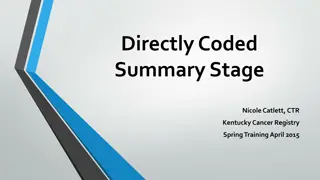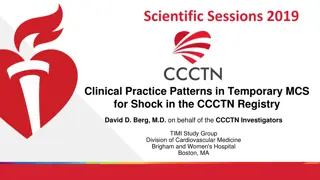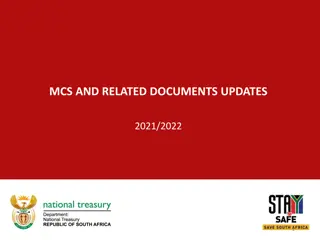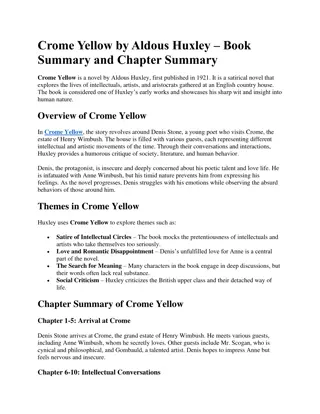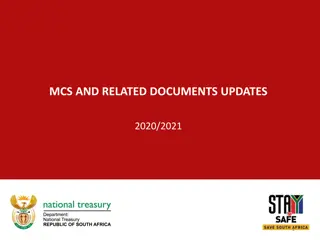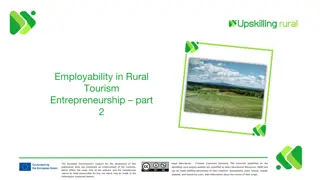
Meteorological Research Expeditions Overview
Explore a detailed overview of multiple meteorological research expeditions conducted in various regions, focusing on severe weather phenomena like supercells, multi-cell storms, and quasi-linear convective systems. Learn about the use of cutting-edge technologies, Doppler radar analysis, microphysics studies, and Ensemble Data Assimilation. Get insights into the collaboration between different research groups and institutions in studying storm dynamics and development.
Download Presentation

Please find below an Image/Link to download the presentation.
The content on the website is provided AS IS for your information and personal use only. It may not be sold, licensed, or shared on other websites without obtaining consent from the author. If you encounter any issues during the download, it is possible that the publisher has removed the file from their server.
You are allowed to download the files provided on this website for personal or commercial use, subject to the condition that they are used lawfully. All files are the property of their respective owners.
The content on the website is provided AS IS for your information and personal use only. It may not be sold, licensed, or shared on other websites without obtaining consent from the author.
E N D
Presentation Transcript
case dates region comments interested science groups IOP8 June 10-11 S.E. Nebraska Array setup barely proceeded MCS passage OU/Biggerstaff IOP11 June 16-17 S.W. Nebraska Initial supercells growing upscale through array NSSL/Schuur, NCSU? UFO4 June 19-20 W. South Dakota Great bow echo, P3 data only CSU/Bell, UIUC, NSSL/Schuur IOP15 June 24-25 S.E. Iowa Forward prop. & rearward-dev. segments CSU/Schumacher, CSWR, NCSU IOP16 June 25-26 N.E. Kansas (Bore IOP) Captured evolution to severe winds NSSL/Ziegler, NCSU Impressive MCS, but only 2 MGs and disdrometers UFO8a July 1-2 W. Missouri CSU/Schumacher? NCAR/Bodine? S.E. South Dakota Everyone! (except CSWR?) possible CI collaboration? IOP20 July 5-6 The canonical PECAN MCS IOP21 July 8-9 Texas Panhandle Self-organizing system, but only partial armada UIUC, NSSL/Coniglio IOP25 July 10-11 N. Kansas Produced bore as it passed through array CSU/Bell, CSU/Schumacher? NCSU? IOP27 July 12-13 S.E. Minnesota High-CAPE but non-severe, became severe later CSWR, NCSU Ideal self-organizing system, but very few instruments IOP30 July 14-15 N.W. Kansas available IOP31 July 15-16 S.E. Nebraska Growing upscale as it passed through array OU/Biggerstaff
Ziegler and Miller (NOAA/NSSL, OU) IOP20, SE South Dakota, Diabatic Lagrangian Analysis using Multi-Doppler wind synthesis incl. all GB radars, in situ and profiler data, DC-8 LASE(?) IOP16, NE Kansas, Diabatic Lagrangian Analysis using Multi-Doppler wind synthesis incl. all GB radars, in situ and profiler data Biggerstaff (OU) IOP8, SE Nebraska, Multi-Doppler wind synthesis incl. all GB radars, in situ and profiler data IOP31, Last SE Nebraska case, Multi-Doppler wind synthesis incl. all GB radars, in situ and profiler data Wang (OU) IOP20, SE SD, Ensemble DA, All PECAN datasets (except mobile radars?) IOP16, NE Kansas, MCS maintenance by multiple bores
Bell and Martinez (CSU) UFO4, W South Dakota, pseudo Dual-Doppler analysis, P3 only case with NEXRAD supplement IOP25, N Kansas, pseudo Dual-Doppler analysis IOP20, SE SD, use of spirals for novel application of TDR in combination with ground-based radars to see if dual airborne/GB- Doppler is possible, correlate observed hydrometeor habit w/radar characteristics (SAMURAI tool) Stechman, Rauber, McFarquhar (UIUC) UFO4, W South Dakota, P-3 spirals- microphysics, 1D modeling IOP20, SE South Dakota, P-3 spirals- microphysics, 1D modeling IOP21, Texas Panhandle, TDR & ground based radar, and microphysics
Kosiba, Wurman (CSWR) IOP27, SE Minnesota case, Multi-Doppler wind synthesis incl. all GB radars, in situ and profiler data IOP15, SE Iowa case, Multi-Doppler wind synthesis incl. all GB radars, in situ and profiler data Schuur (NOAA/NSSL) UFO4, W South Dakota, Quasi Vertical Profiles, dual-pol signatures and compare to microphysics (infer from microphys. from dual-pol) IOP11, SW Nebraska, P-3 spiral over GB radars Coniglio (NOAA/NSSL) IOP20, SE SD, ENKF analysis for processes leading up to QLCS tornado IOP21, Texas Panhandle, WRF-DART ENKF analysis for processes leading up to bowing segment/upscale growth of supercell
Schumacher (CSU) UFO8a, W Missouri, profiler data, disdrometer data (soundings and WRF simulations) IOP15, SE Iowa, Analysis of thermo profiles in obs and WRF IOP25, N Kansas, convective line to the rear of MCS (soundings and WRF simulations) IOP21, Texas Panhandle, Analysis of thermo profiles in obs and WRF Parker (NC State) IOP15, SE Iowa (CM1 & WRF) IOP16, NE Kansas (CM1 & WRF) IOP20, SE South Dakota (CM1 & WRF) IOP27, SE Minnesota (CM1 & WRF) IOP11 observational study (soundings, Multi-Doppler wind synthesis using GB radar)
modeling efforts interested science groups NWP-like assessments CSU/Schumacher Two DA case studies & predictability assessment NSSL/Coniglio Outflow & maintenance in sfc-based vs elevated MCSs NCSU Quasi-stationary MCS dynamics Ens DA to assess obs impact, best model DA configuration,predictability and bore/MCS interactions for maintenance CSU/Hitchcock OU/Wang & Chipilski longitudinal studies interested science groups collaborative group UM/Belay from Bore group interested cold pool depth/strength assessment Microphysics analysis of all spiral data UIUC evolution of pre-convective soundings CSU/Hitchcock microphysics impacts on MCSs and parameterization NSSL/Mansell-Ziegler

